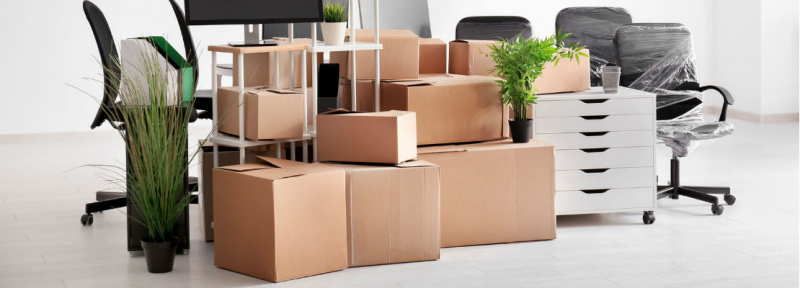Make sure that the moving boxes are evenly full and that the lids close nicely. This improves the speed of loading and unloading and reduces the risk of damage. It is not a problem if you leave several boxes open because the items fit in the box, but the lid can no longer be closed. Do not use tape to seal the boxes, but fold them according to the instructions on the box. Write on the label with a marker what is in the box and to which room the box should be moved. You can stick the labels in the top right corner or at the indicated place.
Note: do not make the boxes too heavy! We prefer 15 boxes more than heavy boxes.
Always keep personal items, medicines, important papers, valuables, and keys separately.
Crockery and glassware
- First, free up a workplace on, for example, the table or counter before you start packing the moving boxes. Ensure you can also store a stack of wrapping paper in the workplace.
- Glass, pottery, and porcelain should be packed in the enclosed wrapping paper. Do not use newspapers because they can release difficult or impossible to remove ink.
- Items that can be scratched, such as silver, copper, and brass, should also be packed.
- Start at the bottom of the box with a layer of heavier pieces with the lighter items on top.
- Place plates, flat dishes, saucers, glass plates, and the like on their side in the moving box.
- Fill the gaps with crumpled wrapping paper and make the bottom layer even.
- Glasses and cups must be packed upright.
- Crockery should not be packed “cold against each other.” This increases the risk of breakage. Crockery must be packed “floating”; you achieve this by working around the objects with crumpled wrapping paper. This way, the pressure is resisted when other boxes are placed on the relevant box.
Kitchen and food items
- Place the packs, jars, and bottles with foodstuffs in the bottom of the moving box and secure them with crumpled wrapping paper. The other light items can be placed on this.
- Place heavier kitchen equipment on the bottom as well.
- Assemble pans as much as possible.
- Always put cleaning items in a separate box.
- Diluents, petrol, etc. are moved by us, but may not be stored by us.
- Make sure that the bottles, jars, and packs are tightly closed.
- We do not move gas tanks and oxygen bottles.
Fridge and freezer
Empty these as much as possible in the days before the move. Pack the last items on the moving day yourself and take them with you. Moreover, you can keep your refrigerated items cold by storing them in chilled packaging boxes. If possible, defrost and clean the freezer 1 or 2 days before the move.
Paintings, prints, and photo frames
- Pack these items together as much as possible. You can optionally leave one or more boxes open at the top.
- The movers pack larger paintings that do not fit in a moving box. You can leave these hanging on the wall or put them somewhere in a corner, so they don’t get in the way.
- Keep the photos separate from the negatives.
Lamps and lampshades
- You should always remove the lampshades from the table lamps, etc.
- Always pack lampshades and feet separately.
- You can leave lampshades that do not fit in a moving box. These will be transported separately by the movers.
Television, computer, and audio equipment
Remove all connectors and fasteners from this equipment and tie up the cords. The movers will take care of the rest.
Books
Place books upright in a box back to back and no more than 1 layer. You can fill the box with lighter items such as clothes or linen or leave the box empty for the rest.
Hanging clothes
Hanging clothes are moved to the designated special wardrobe boxes. These boxes, together with the boxes, are delivered to your home on demand.
Ties, belts, and empty clothes hangers can be packed in normal moving boxes.
Blankets, duvets, and sleeping bags
Blankets, duvets, and sleeping bags can be packed in open garbage bags as much as possible.
Plants
- You can pack the smaller plants together in an open box. Make sure that the water has been removed from the decorative pot.
- Larger plants are the last to go into the removal van.
- Garden tools/lumber, etc
- Clean the garden tools and bundle them if possible.
- Also, make packages and/or bundles of slats, planks, and other long objects.
- It is important to put all other loose items in moving boxes.
AFTER THE MOVEMENT
- First, free up a workplace on, for example, the table or counter before you start unpacking the moving boxes. Then, if necessary, you can place a towel or Molton in the workplace. If something falls, then the risk of breakage is the smallest.
- Remove the sticker from the moving box after emptying the box.
- Put the empty boxes together in an easily accessible and moisture-free place. You can give the used wrapping paper with your old paper.
- Take the time to pack and unpack. If you work too quickly or are tired, the risk of damage is much greater.
To read more useful articles, click here.


